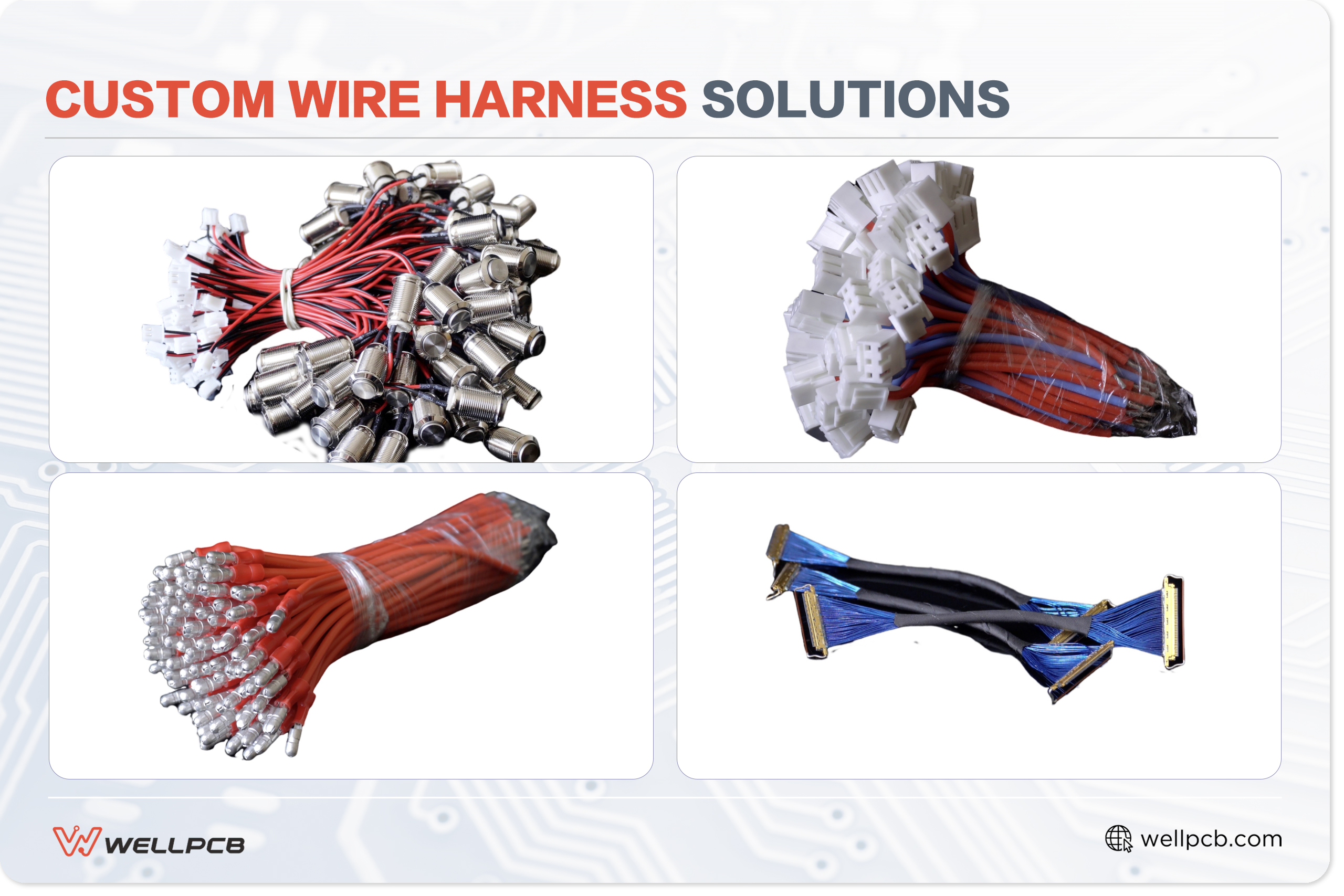Contents
Flexible Flat Cables
What is a flexible flat cable?
As the name sounds, flexible flat cables (FFC) are a type of electrical wire that is flexible and flat. They belong to the world of flexible electronics or flex circuits. High-density electronics products like cell phones and laptops typically have them. Nonetheless, you will also see that flexible flat cables are usually thin cables.
Another term called flexible printed circuit (FPC) is often imprecisely used for FFC. However, this is not accurate as FPCs are circuits that are developed on a flex substrate. At the same time, flexible flat cables are just wire connections and do not involve any components. Figure 1 shows three ribbons of flexible flat cables.
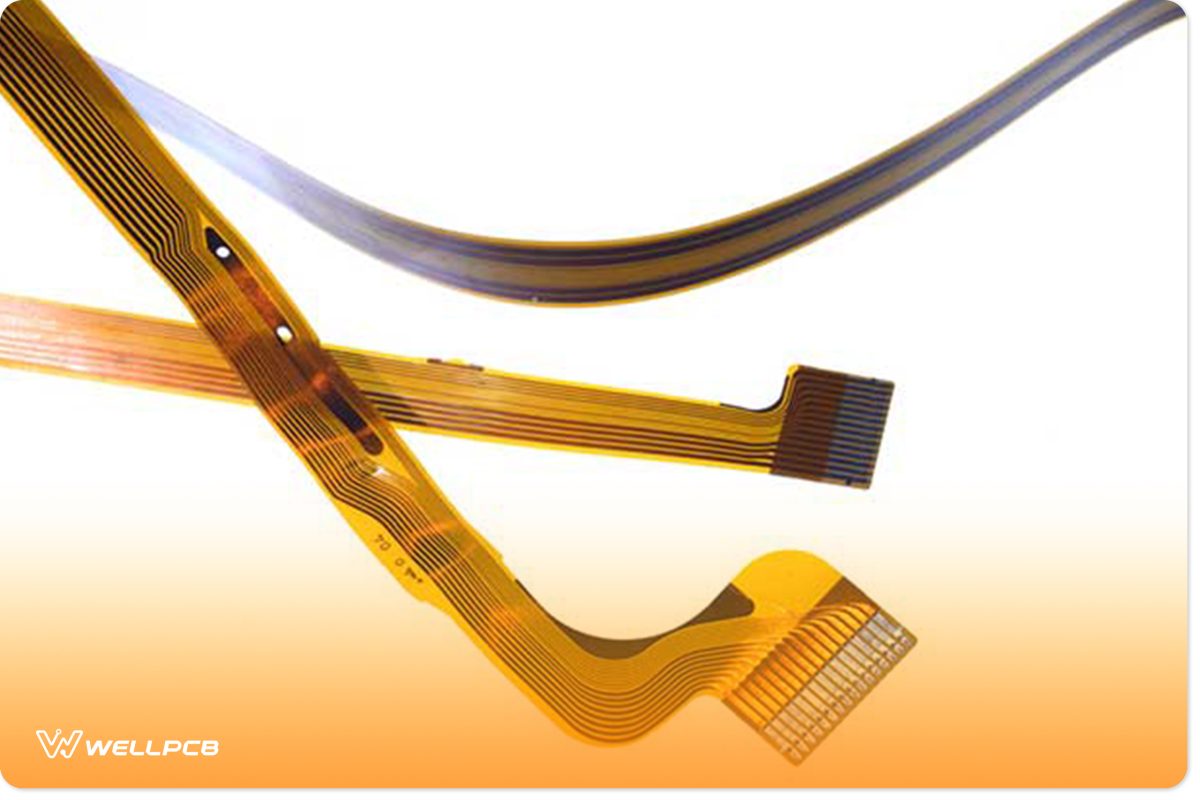
What are the features of Highly flexible flat cables?
Highly flexible flat cables are those cables that are halogen and fillers, kink resistant, and flexible. These ultra-flexible cables are known to be best for high temperatures and harsh environments. The following are some of the features that are common among highly flexible flat cables:
- Flexibility: Flexible silicone and tinned, ultra-flexible copper wires make these cables highly flexible. You can use them correctly in tight areas to have a bend radius of a minimum of ¼ inches.
- Longer Lasting: In flexing uses, they are known to live for 10 million cycles.
- Harsh environments: You can use them ideally in a clean room, but they also support vacuums. Moreover, they can operate in a temperature range of -65°C to 260°C. This range does not matter whether they are exposed to salt, steam, water, or other chemicals.
- Fire-resistant: They will meet the fire standards such as the “UL-94 vertical flame standard”.
Apart from these features, you will also get durable, clear, and flexible coverings or insulation for these cables. Can it get any better than that?
In this section, we introduced the flexible flat cables and their features. In the next section, we will tell you about some of their technical specifications. Stay tight.
General Specifications of Flexible Flat Cables
Exposure Length
The exposure length of a flexible flat cable refers to the length of the exposed electrical connection at the cable’s end.
Pitch
Pitch is simply the spacing between the wire conductors. To be precise, it is the distance between the centers of two adjacent conductors. You can observe that there can be different pitches among the conductors on the same flexible flat cable. But this is not common. Commonly, you will find them with pitch values of 1 mm and 0.5 mm.
Type
Generally, there are two main types of flexible flat cables. They are named Type A by Molex or Type 1 by Würth, and Type D or Type 2. In Type 1, flexible flat cables have visible electrical connections on the same side of each termination. But in Type 2, the visible electrical connections are on the opposite sides of each terminating point. You can imagine them as face-down and face-up connections.
Conductors size
We don’t need to explain this term as you can very rightly tell what it would mean. It is merely the thickness and width of the wire conductors.
Stiffener
You may come across flexible flat cables with extra material affixed to the other side of the exposed cable length. The name of stiffener in FFCs calls this type of additional material. Can you guess their reason for being there? They are to smooth low insert force and zero insertion force connections. Figure 2 shows a technician using a type of flexible flat cable in a workshop.
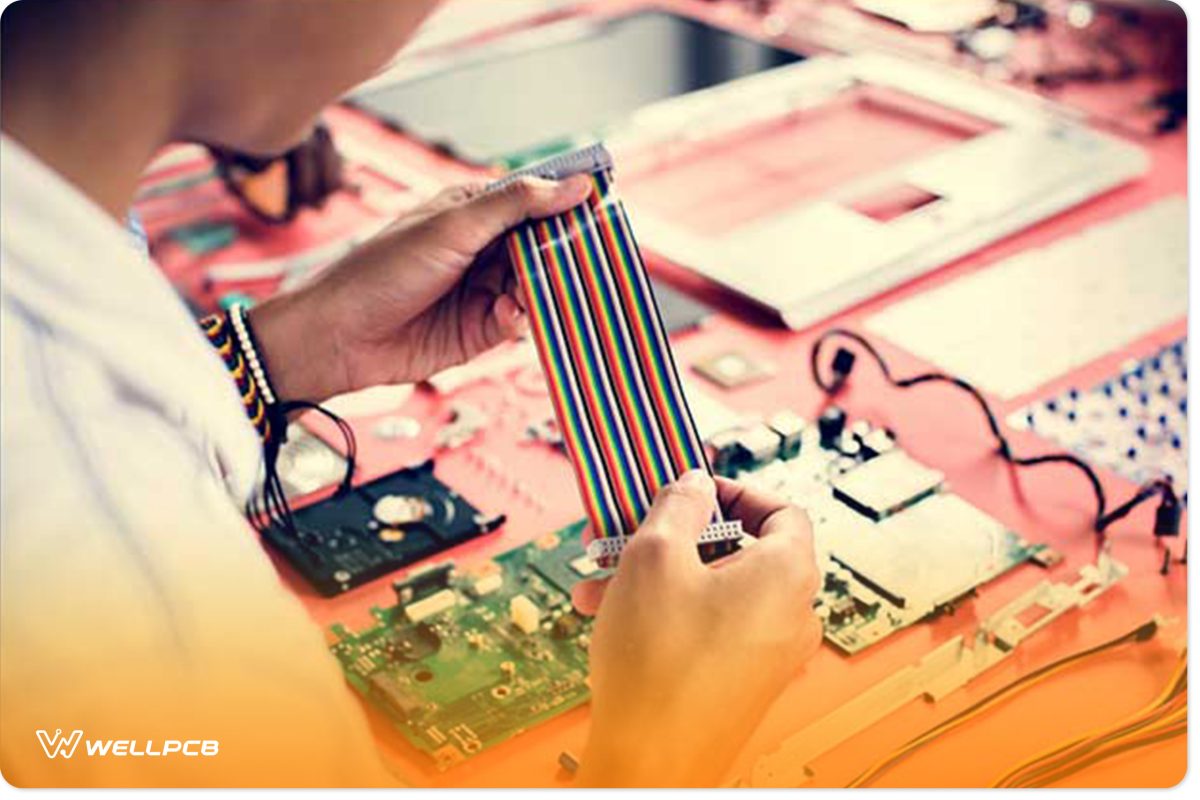
In this section, we defined the terms used for defining the specifications of flexible flat cables. In the next section, we will tell you about its advantages for different applications.
Advantages of Flexible Flat Cables
If you are wondering why you should use flexible flat cables, then this section is for you. It would help if you went for them because of the following benefits:
- Reliable: You will not come across any common malfunctions and wiring errors. Parallel conductor geometry reduces these kinds of mistakes.
- Lightweight and High Strength: They are lighter in weight than traditional wires. It doesn’t have unnecessary insulations, tapes, and fillers. Furthermore, it is mechanically stable, so you don’t need large conductors for robustness.
- Space Efficient: They have low physical and bulk volume. Therefore, they can perfectly fit in tight spaces.
- Flexible: Well, their name already explains their great advantage! Figure 3 shows flexible flat cables soldered to a printed circuit board.
- Same electrical parameters: Their constant geometry provides constant inductance, impedance, capacitance, crosstalk, delay, time, and attenuation.
- High current-carrying capability: They can dissipate heat more effectively because of high surface-to-volume ratios. So this, in turn, increases their current handling capability at a given increase in temperature.
- Less skewing effects: They have minimum time delays among signals in one flat cable.
- High-density interconnections: You can pack them more effectively so they can supply a higher conductor density.
- Easy to use: They can attain any shape quite comfortably. Just give it a try.
So, these are already more than enough advantages of using flexible flat cables in your projects. In the next section, we will now compare them with the traditional round cables.
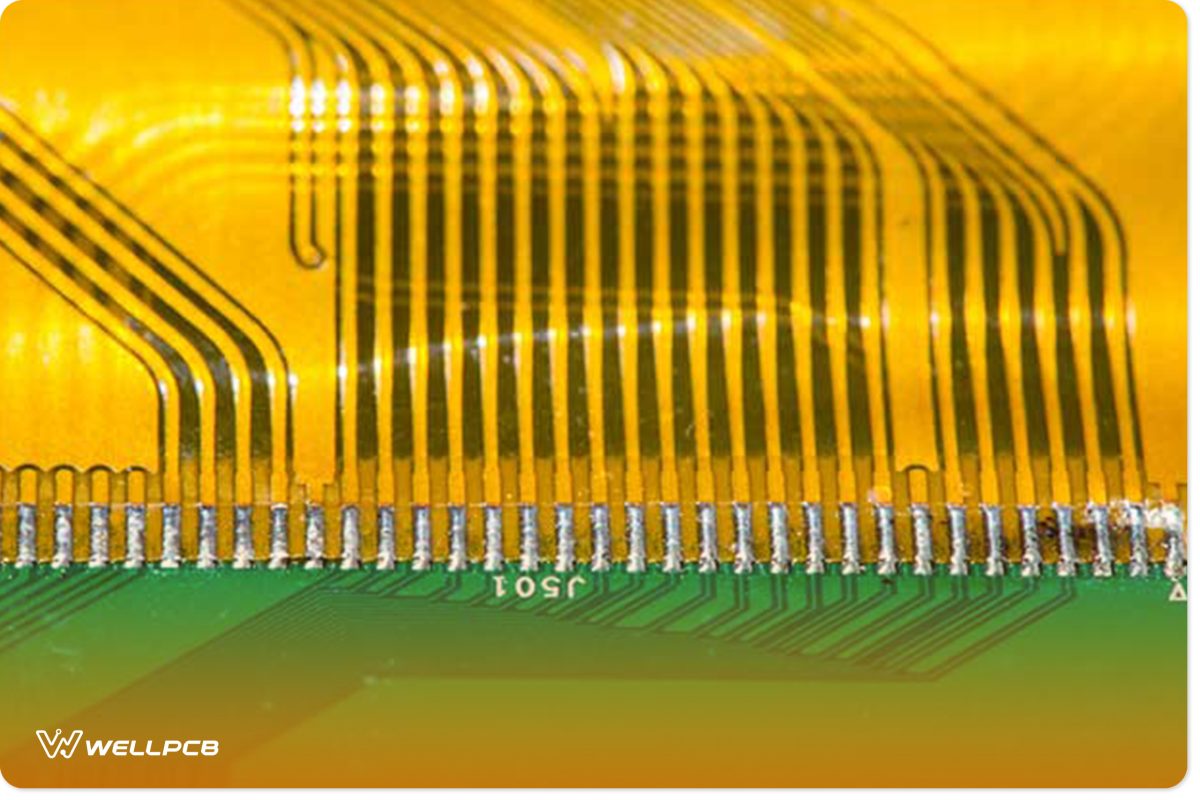
Flexible Flat Cables vs. Round Cables
You will see that insulated wire bundles are further wrapped in many layers of different materials in round cables. This material is usually a polymer or a textile material for reducing frictional heating during cable movement. FURTHERMORE, a PVC jacket is commonly seen covering these layers, other braided copper, low-friction wraps, and an overall PVC jacket for abrasion resistance. Figure 4 shows a type of round electrical cable. You can observe how heavy is the insulation-related material around it.
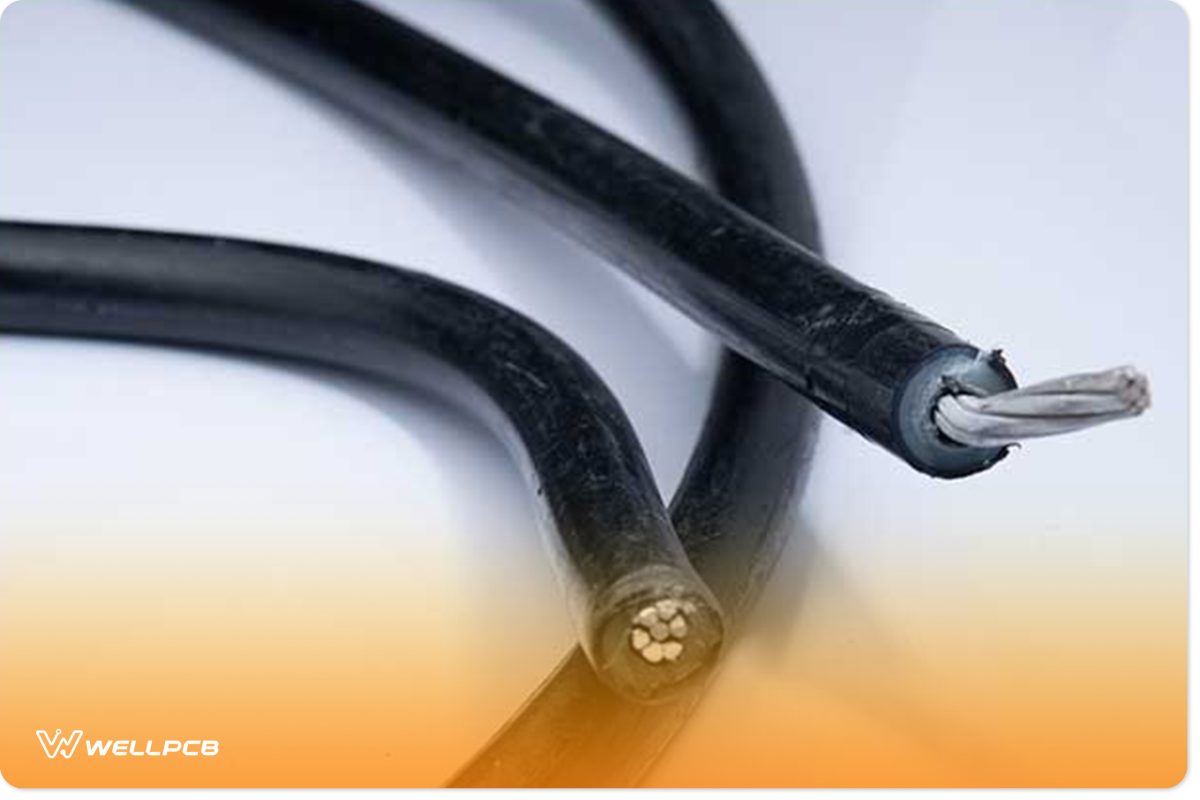
Is not it too much for a simple wire conductor? This construction is not ideal because of the many insulation layers and the usage of distinct low-friction materials. However, flexible flat cables don’t need these types of materials. Their conductors don’t move within their insulations. They are more flexible, so they also can bend quite easily.
So, this primary difference in the construction of flexible flat cables provides all of its benefits. In the next section, we will tell you about the typical applications of flexible flat cables.
Applications of FFC
Coming to the applications, numerous industries are making use of flexible flat cables. You will find them in areas such as medicine, aerospace, industrial automation, pulp and paper, food and beverages, festoon systems, packaging, and semiconductors.
R electrical products. If you are wondering about specific product applications, you can use them in scanners, copiers, plotters, stereos, DVD players, fax machines, LCD appliances, and other similar products. In fact, you can find them almost anywhere in modern electronics. We, here at WellPCB, provide flexible flat cable assembly services. Figure 5 further shows some appliances where you can easily find flexible flat cables.

If you have a product in mind and want to use flexible flat cables, you can contact us immediately. We, here at WellPCB, provide flexible flat cable assembly services. Just tell us your demands and let us do the remaining work. This, too, at meager rates.
Conclusion
Engineers are always looking for innovative designs that can withstand high temperatures and harsh environments. For this purpose, the one thing you need to do is to let go of the traditional round cables. Go for flexible flat cables that are new yet with all the advantages explained in this article.
Hopefully, by now, you will decide whether you need to use them in your projects or not. Use them if you are looking for cables that are easy to use, flexible, robust, space-efficient, have high current-carrying capability, are reliable, and offer constant electrical parameters. Is not it just everything?
If you still have any questions, then don’t hesitate even for a second and contact us right now.



